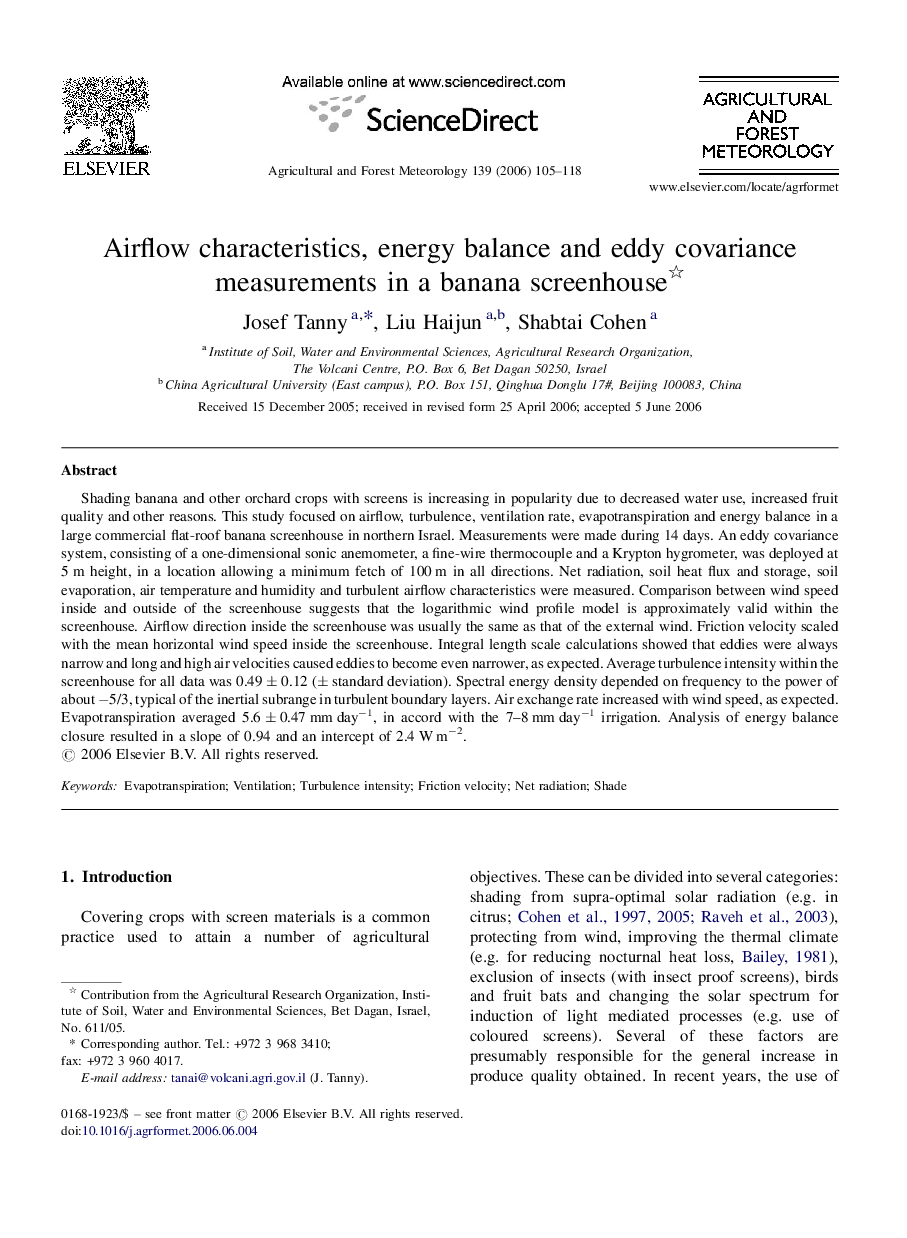| Article ID | Journal | Published Year | Pages | File Type |
|---|---|---|---|---|
| 82658 | Agricultural and Forest Meteorology | 2006 | 14 Pages |
Shading banana and other orchard crops with screens is increasing in popularity due to decreased water use, increased fruit quality and other reasons. This study focused on airflow, turbulence, ventilation rate, evapotranspiration and energy balance in a large commercial flat-roof banana screenhouse in northern Israel. Measurements were made during 14 days. An eddy covariance system, consisting of a one-dimensional sonic anemometer, a fine-wire thermocouple and a Krypton hygrometer, was deployed at 5 m height, in a location allowing a minimum fetch of 100 m in all directions. Net radiation, soil heat flux and storage, soil evaporation, air temperature and humidity and turbulent airflow characteristics were measured. Comparison between wind speed inside and outside of the screenhouse suggests that the logarithmic wind profile model is approximately valid within the screenhouse. Airflow direction inside the screenhouse was usually the same as that of the external wind. Friction velocity scaled with the mean horizontal wind speed inside the screenhouse. Integral length scale calculations showed that eddies were always narrow and long and high air velocities caused eddies to become even narrower, as expected. Average turbulence intensity within the screenhouse for all data was 0.49 ± 0.12 (± standard deviation). Spectral energy density depended on frequency to the power of about −5/3, typical of the inertial subrange in turbulent boundary layers. Air exchange rate increased with wind speed, as expected. Evapotranspiration averaged 5.6 ± 0.47 mm day−1, in accord with the 7–8 mm day−1 irrigation. Analysis of energy balance closure resulted in a slope of 0.94 and an intercept of 2.4 W m−2.
